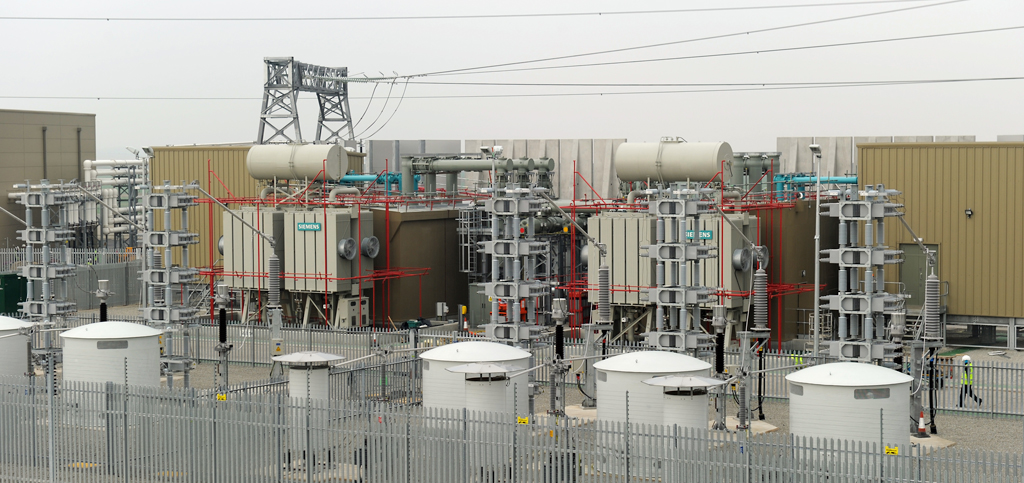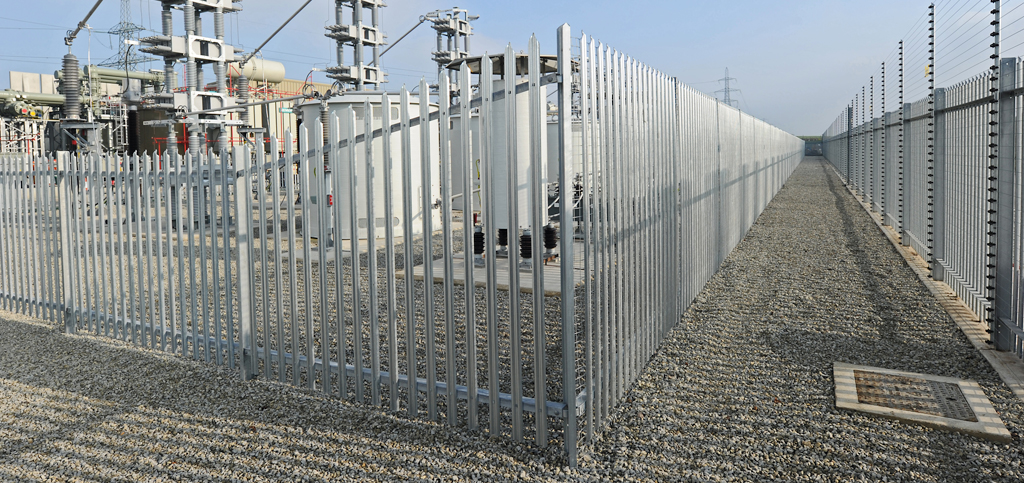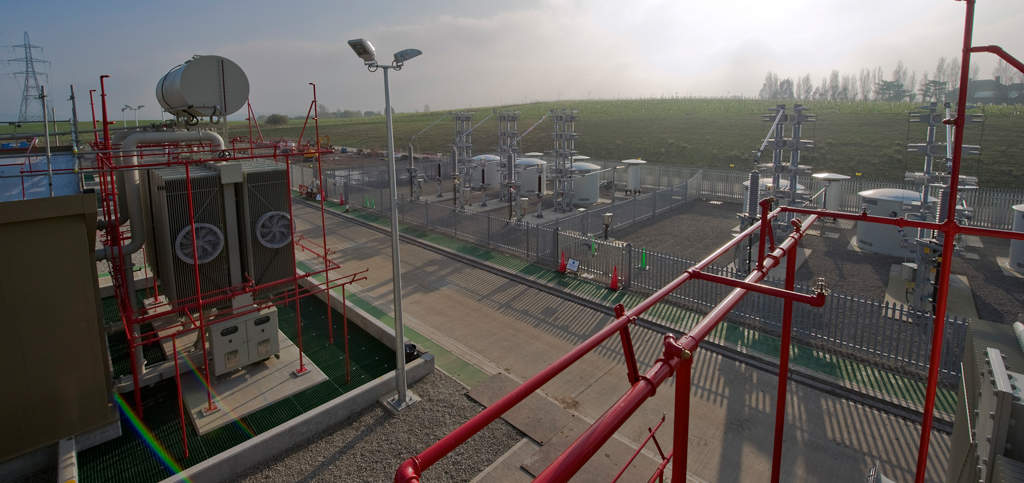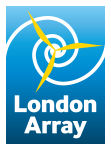
Where is it? who built it? How has it developed? Browse this section to read a summary of some of the most important information about the wind farm

Location
London Array Offshore Wind Farm is located more than 20km (12 miles) from the Kent and Essex coasts in the outer Thames Estuary. The site is one of three areas within the estuary that the Government earmarked for offshore wind farm development. The map below shows the wind farm’s position relative to the coast
Covering an area 100km2, London Array is located between two sandbanks – Long Sand and Deep Knock – in waters up to 25m deep. The site is bounded to the west by Black Deep (the main approach to the Port of London) and to the south by the approach to Fisherman’s Gat.
The water depth increases quite quickly to the east of the site, into an area used by shipping. However, there are no major shipping channels within the wind farm site itself, and Long Sand and Deep Knock provide natural barriers along two sides. The turbines are arranged in rows and columns aligned according to the prevailing south-westerly wind. They are placed 650m to 1,200m apart and connected to each other and to the offshore substations by array cables buried in the seabed.
There are several reasons why this location was chosen. Its main advantages include:
• High wind speed
• Nearby ports to enable construction, operation and maintenance
• Suitable ground conditions • A suitable electricity network connection
• Local power demand (south east England has the UK’s highest electricity demand).Using the electricity locally reduces transmission losses.
Before we gained permission to build at the offshore site, we had to undertake extensive environmental surveys to assess the wind farm’s potential impact on the local area. Our original location plans were amended after the RSPB raised concerns about protecting the Red-Throated Diver, a seabird that overwinters in the outer Thames estuary.
An onshore substation was built at Cleve Hill near Graveney, about 1km south of the Thames Estuary, to serve the wind farm.
To build the site, we cut a plateau into the north face of Cleve Hill, around 6.4m above sea level. Find out more about the construction of Cleve Hill substation here.
Cleve Hill is an ideal site as it’s located next to the existing Canterbury-Kemsley 400kV overhead line to the north. Due to the large amount of electricity London Array generates, the power must be fed directly into the 400kV network. Cleve Hill offered the only site that satisfied our key environmental and technical criteria: it needed no new overhead power lines or soil deliveries for landscaping, and has little visual impact on its immediate neighbours.
The Port of Ramsgate, on the east Kent coast, is London Array’s base for operations and maintenance. Ramsgate was chosen both because of its existing facilities and the potential for enhancement. Find out more about the operations and maintenance base here.

London Array suppliers
In 2009, contracts totalling more than €2bn were agreed with a number of European suppliers who took responsibility for providing the core components and expertise needed to construct London Array. These were:
• Construction of wind turbines: Siemens Wind Power
• Installation of wind turbines: Per Aarsleff A/S and Bilfinger Ingenieurbeau GmBH
• Construction and installation of foundations: Per Aarsleff A/S and Bilfinger Ingenieurbeau GmBH
• Construction of offshore substations: Future Energy, a joint venture between Fabricom, Lemants and Geosea
• Installation of offshore and onshore substations’ electrical systems: Siemens Transmission and Distribution Ltd
• Production of export cables: Nexans Norway AS
• Production of array cables: JDR Cable Systems
• Installation of all cables: Visser & Smit Contracting
• Supply of vessels: MPI and A2Sea
We have sought to use local suppliers where possible and encouraged our main contractors to do likewise.
For example, in June 2010, we held a supply chain event to introduce Kent-based businesses to some of the principal contractors. This was attended by more than 150 companies from a variety of sectors including construction specialists, marine consultancies, security services, equipment providers, hotels and B&Bs, engineering companies and recruitment consultants.
In conjunction with Kent County Council and Locate in Kent, we also developed Kent Wind Energy – an online interactive directory that puts offshore wind farm developers and contractors and local suppliers in touch with each other.
More than 120 Kent companies and organisations worked with London Array during the construction phase, equating to contract values in excess of £20m. The commitment to local business continues.

London Array Project History
The project was born in 2001, when a series of environmental studies in the outer Thames Estuary confirmed the area as a suitable site for a wind farm.
In June 2005, London Array became the first Round 2 offshore wind farm to apply for planning consent. Several public exhibitions were held in the Kent area to tell people about our proposals. We were granted consent for the offshore works in December 2006. Planning permission for our onshore application followed in August 2007 and a London Array project team was established.
In October 2008, we formally went out to tender for the offshore elements of London Array. Tenders were received three to four months later. Click here for details of our main contractors.
Onshore substation designs approved Swale Borough Council approved our designs for the Cleve Hill substation in December 2008.
In May 2009, Phase One of the project received formal approval and London Array’s three shareholders announced they would jointly invest €2.2 billion in building the initial 630MW phase.
Development of the substation brought a range of supply chain opportunities to the Kent area, ranging from construction and transport through to business support services such as catering and accommodation. More than 120 Kent companies were utilised, equating to contract values of more than £20m.
We also worked with Kent County Council and Locate in Kent on the development of the Kent Wind Energy business directory – it’s free for companies to sign up and puts local suppliers in touch with offshore wind farm developers and contractors. Visit www.kentwindenergy.co.uk for more information.
Ground is broken on the Cleve Hill substation in July 2009.
Development of the substation brought a range of supply chain opportunities to the Kent area, ranging from construction and transport through to business support services such as catering and accommodation. More than 120 Kent companies were utilised, equating to contract values of more than £20m.
We also worked with Kent County Council and Locate in Kent on the development of the Kent Wind Energy business directory – it’s free for companies to sign up and puts local suppliers in touch with offshore wind farm developers and contractors. Visit www.kentwindenergy.co.uk for more information.
The first of the 177 offshore foundation monopoles is installed. This is swiftly followed by installation of the offshore substations and the first array and export cables.
With the first turbine having been installed in January, by December the 175th and final turbine was installed at London Array, marking the end of major construction.
Development of the substation brought a range of supply chain opportunities to the Kent area, ranging from construction and transport through to business support services such as catering and accommodation. More than 120 Kent companies were utilised, equating to contract values of more than £20m.
We also worked with Kent County Council and Locate in Kent on the development of the Kent Wind Energy business directory – it’s free for companies to sign up and puts local suppliers in touch with offshore wind farm developers and contractors. Visit www.kentwindenergy.co.uk for more information.
Prior to this, the first turbine began producing power in October.
London Array became fully operational in April, with the official inauguration taking place in July.
